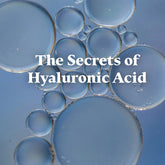Does Self Tanner Cover Scars

Not all scars fade quietly. Whether they’re from breakouts, stretch marks, or a run-in with life, you might be wondering if self-tanner can help blur the story. The short answer? Sometimes. But it depends on your skin, the scar, and how you apply. Here’s what you need to know.
- What Is a Scar?
- How Self-Tanners Work
- Can Self-Tanner Help Hide Scars?
- How to Apply Self-Tanner on Scars
- Alternatives if Self-Tanner Isn’t Enough
- Dermatologist Insights
- Bottom Line
- FAQs
- Sources
What Even Is a Scar?
A scar is your skin’s version of a patch job after an injury. Depending on how deep or intense the damage was, scars can heal flat, raised, or sunken. There are a few types you should know:
- Atrophic scars: Think acne pits or stretch marks, these sit below the surface.
- Hypertrophic & keloid scars: Raised and sometimes firm.
- Hypopigmented scars: Lighter than your natural skin tone.
- Hyperpigmented scars: Darker than your base tone.
How Self-Tanners Work
Most self-tanners rely on DHA (dihydroxyacetone), a sugar that reacts with dead skin cells on the outer layer of your skin, creating a temporary bronze effect. Scar tissue doesn’t always have the same pH, hydration level, or cell turnover as surrounding skin. That means self-tanner might absorb more deeply, or less evenly.
Can Self-Tanner Help Hide Scars?
Yes—but with a few asterisks.
Scars Self-Tanner Can Help Blur:
- Atrophic scars: Since they’re textural and lighter, self-tanner can help blend them in.
- Hypopigmented scars: A good mousse or lotion can create more uniform tone.
Scars That Might Not Tan Well:
- Keloids & hypertrophic scars: May absorb unevenly or darken more than desired.
- Hyperpigmented scars: May get more intense under tanner.
How to Apply Self-Tanner on Scars
- Exfoliate gently: Focus on surrounding skin, not the scar itself.
- Moisturize dry spots: Helps slow absorption on scar tissue.
- Apply in light layers: Build slowly to avoid blotching.
- Use a mitt or brush: For better blending over textured skin.
- Color-correcting tanners: Green/violet undertones help neutralize visibility.
Alternatives if Self-Tanner Isn’t Enough
- Body makeup: Transfer-resistant creams like Dermablend.
- Airbrush spray tans: Pro-level shading can even out tone.
- Camouflage tattoos: Permanent blending for light/flat scars.
- Medical treatments: Micro needling, laser, silicone gels.
Dermatologist Insights
According to Dr. Annie Chiu, dermatologist and founder of The Derm Institute, "Self-tanners can blend some hypopigmented scars, but results vary. Always patch test and avoid new scars until fully healed."
Real Talk: Testimonials
“I have a long white scar on my shin. Most self-tanners made it darker or orange-y, but Makai’s mousse actually blended it pretty seamlessly after two coats.” – Chelsea R., Verified Buyer
“Stretch marks on my hips stand out way less with a good tan—especially if I layer with moisturizer first.” – Kayla M., Fitness Instructor
Bottom Line: Can It Cover?
Self-tanner can help blur scars—but it depends on the scar type, product, and technique. Gradual tans, hydration, and patience are your best friends.
FAQs
- Will self-tanner make my scars worse? No, but it may highlight them if not blended properly.
- Can I tan over new scars? Wait 6–12 weeks until they’re fully healed.
- What’s the best type of self-tanner for scars? Buildable mousse or lotion with minimal alcohol.
Sources
- American Academy of Dermatology: www.aad.org
- JCAD: Clinical Reactions to DHA in Hyperpigmented Skin
- Mayo Clinic: Scar Treatment Overview
Shop All Self Tanner:
Mousse | Body Mist | Self tanner for Face | Self Tanner for Men | Mitt | Back Applicator | Bundles and Sets | Find Your Glow | Gradual Tanning Lotion











